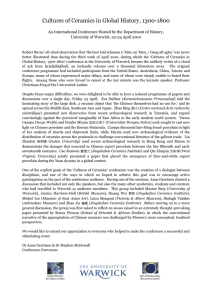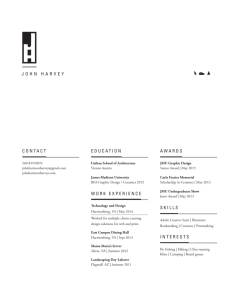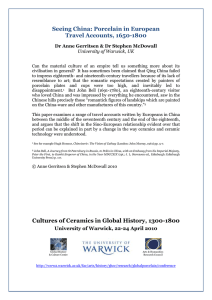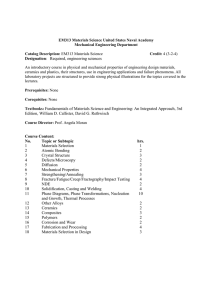Ceramics in Chinese Translation: Forging Bronzes on a Jingdezhen Model
advertisement
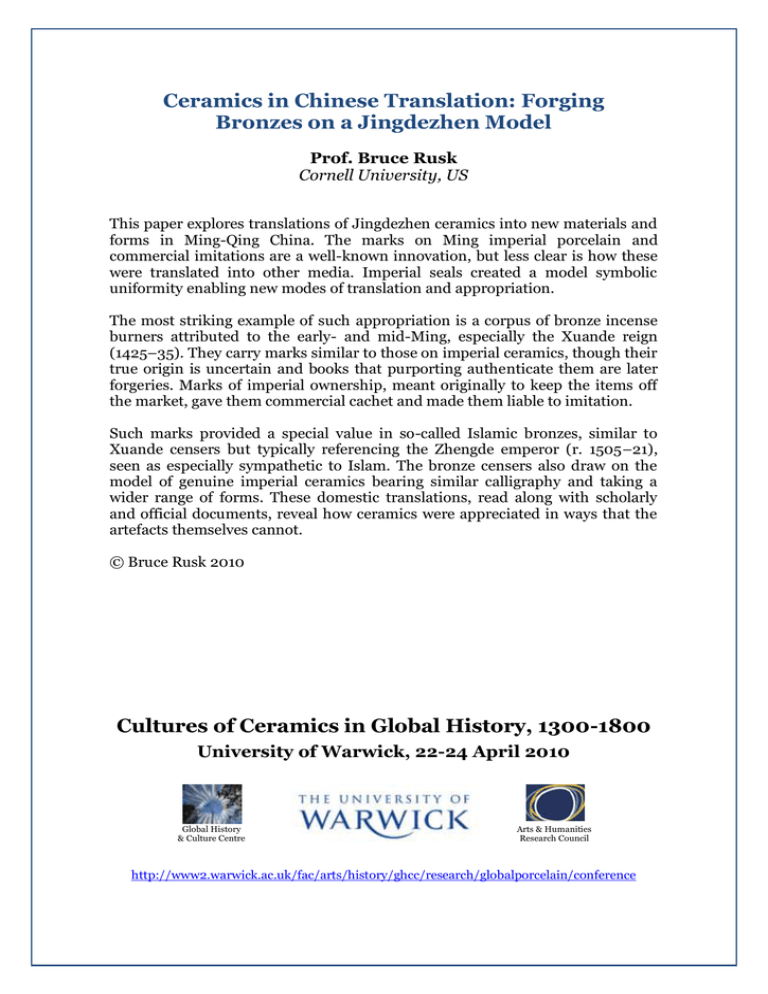
Ceramics in Chinese Translation: Forging Bronzes on a Jingdezhen Model Prof. Bruce Rusk Cornell University, US This paper explores translations of Jingdezhen ceramics into new materials and forms in Ming-Qing China. The marks on Ming imperial porcelain and commercial imitations are a well-known innovation, but less clear is how these were translated into other media. Imperial seals created a model symbolic uniformity enabling new modes of translation and appropriation. The most striking example of such appropriation is a corpus of bronze incense burners attributed to the early- and mid-Ming, especially the Xuande reign (1425–35). They carry marks similar to those on imperial ceramics, though their true origin is uncertain and books that purporting authenticate them are later forgeries. Marks of imperial ownership, meant originally to keep the items off the market, gave them commercial cachet and made them liable to imitation. Such marks provided a special value in so-called Islamic bronzes, similar to Xuande censers but typically referencing the Zhengde emperor (r. 1505–21), seen as especially sympathetic to Islam. The bronze censers also draw on the model of genuine imperial ceramics bearing similar calligraphy and taking a wider range of forms. These domestic translations, read along with scholarly and official documents, reveal how ceramics were appreciated in ways that the artefacts themselves cannot. © Bruce Rusk 2010 Cultures of Ceramics in Global History, 1300-1800 University of Warwick, 22-24 April 2010 Global History & Culture Centre Arts & Humanities Research Council http://www2.warwick.ac.uk/fac/arts/history/ghcc/research/globalporcelain/conference
